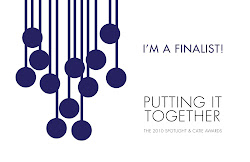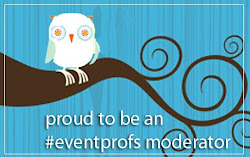 My conceptual mind is a tinkering away today. The analogy is not yet right, but the question is firm and good:
My conceptual mind is a tinkering away today. The analogy is not yet right, but the question is firm and good:Will the "Community" surpass the "Event" as the thing? So that events are simply bubbles on the surface of things?
I was re-reading an article this by @samueljsmith in the e-book Social Media for Events by @ready2spark and two specific points leaped off the page at me:
"Attendees will expect to connect with other delegates before, during, and after the event." & "New Events will emerge from online communities."
I am a strong believer in both of these statements (as well as the other 8 great points Samuel makes in the article) and have for a while been articulating the change in the event atmosphere and the understanding of event design and event education. But today a new thought happened! Forever, I have thought about events as "the event" - it is that which we prepare for, which attendees get excited about. The Event has always been the thing. And communities occurred as a result of the event; that is to say that people would meet at a conference or event and then stay in touch as new contacts in a Rolodex-version-of-community. But with a changing understanding of how adult learning occurs, more and more focus has been placed on conversation before, during and after the event. The explosive growth of Social Media continues to demonstrate that the power of the community to shape dialogue and make change is vast.
So what if the Community is really the thing, and not the event? What happens if we re-envision events as momentarily emergences from the conversations within a community that occur over the course of time. What if we consider first the community and its dialogues as the primary experience and like the warming lava inside lamp, at given periods of time portions of the population become excited and bubble up into gatherings on a certain topic, around a specific discussion, or for a special need of the community. As the accomplish their task, they fall back into the community and the conversation continues.
Perhaps a lava-lamp is not the best visual image here, but it gets at the point. Or maybe it is more like that plasma light I used to love to play with as a kid - lots of particles (=people) flying around inside a defined space (=community) in and amongst low pressure gases which makes them excited and visibly functional (=brand, organization, conversation, interest) and act on the sphere by touching your finger to the outside (=action of putting on an event) you cause some of those electrons to get hyper excited and come together to form potent streams of lights.






I like to think of it as an ecosystem. The need for collaboration and communication germinates the need for the event. The event, in turn, provides the sustenance for the community to stay vital and connected after it is over.
ReplyDeleteThis is why I think social media is such a natural fit for events – the creation, participation and extension of communications and relationships in that medium mostly closely aligns with the ecosystem model (as social networks are ecosystems themselves)
Hi Ryan,
ReplyDeleteThanks for reading the blog post! I am happy to hear that it is giving you new ideas!
I really like Jen's answer to your question. The ecosystem analogy fits very well.
I think it will be the community that needs to nurtured and injected with passion in the long run. In all events, the community is much larger than the number of attendees. Take the events community - it is huge. But people tend to belong to different tribes. Some are MPI members, ISES members, ASAE members, BIZBash fans, #eventprofs, MeCo, etc. Yet - if you go to any of these events - you never have the entire tribe coming together. It is usually a subset.
IMO - this is where hybrid events and social media play a crucial role in community development around events. These technologies help include the virtual attendees in the on-site experience (at least give them a window to peer through) and social media creates a communication bridge between the attendees onsite and at home. The impact is really quite powerful.
- Sam
Great discussion point. I think our team has long recognised that, especially being a public event, we wouldn't exist if there wasn't a huge community (or several of them, in fact) already in existence to which to market ourselves. This year, as we used wide reaching social media platforms to access these communities, the response has been HUGE - High end tickets we've never been able to sell out in the past were gone within *hours* this time around; at two months, our general ticket sales are beating our '2 week out' numbers; our re-launched and heavily social media connected website received more hits in 3 days than it did in the previous 3 months...
ReplyDeleteWhy? Not much has changed from our point of view but our engagement with these communities.
Your lava lamp analogy almost perfectly explains the nature of our 'genre' event. People talk about the type of content we provide (entertainment media) every day of the year. A few times a year they get to talk about it with 10,000 other people in an exhibition hall, which is where we come in. We are certainly aware we wouldn't be there if people weren't ‘talking about it’ in the first place. It was just a matter of understanding that, and learning how to engage. Let's see how 2010 and a focus on community and personal experiences turns out for us, eh?